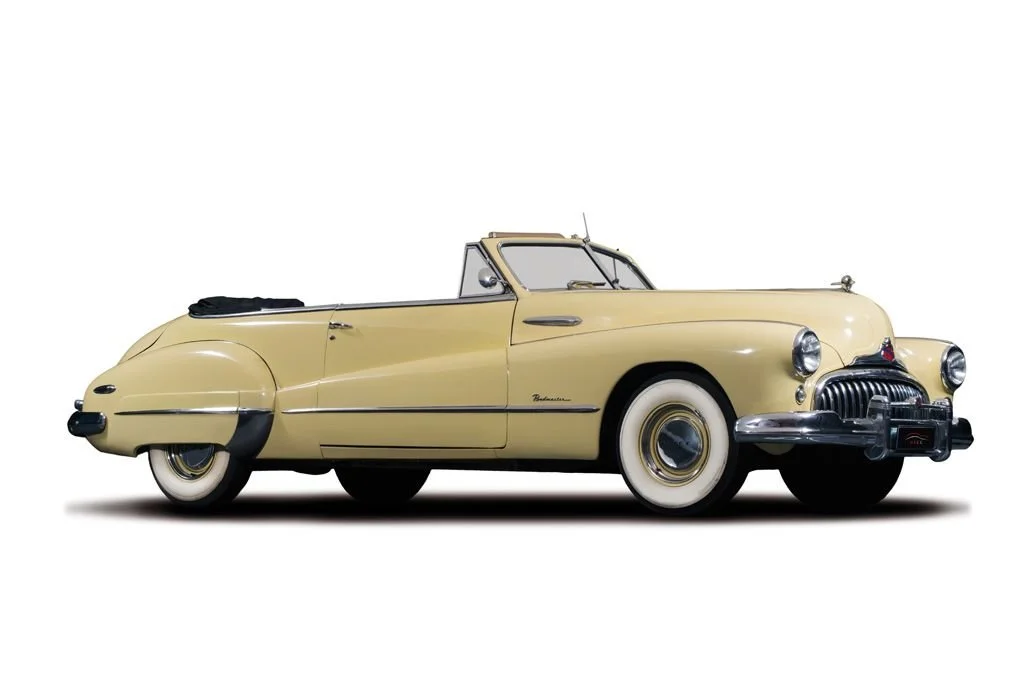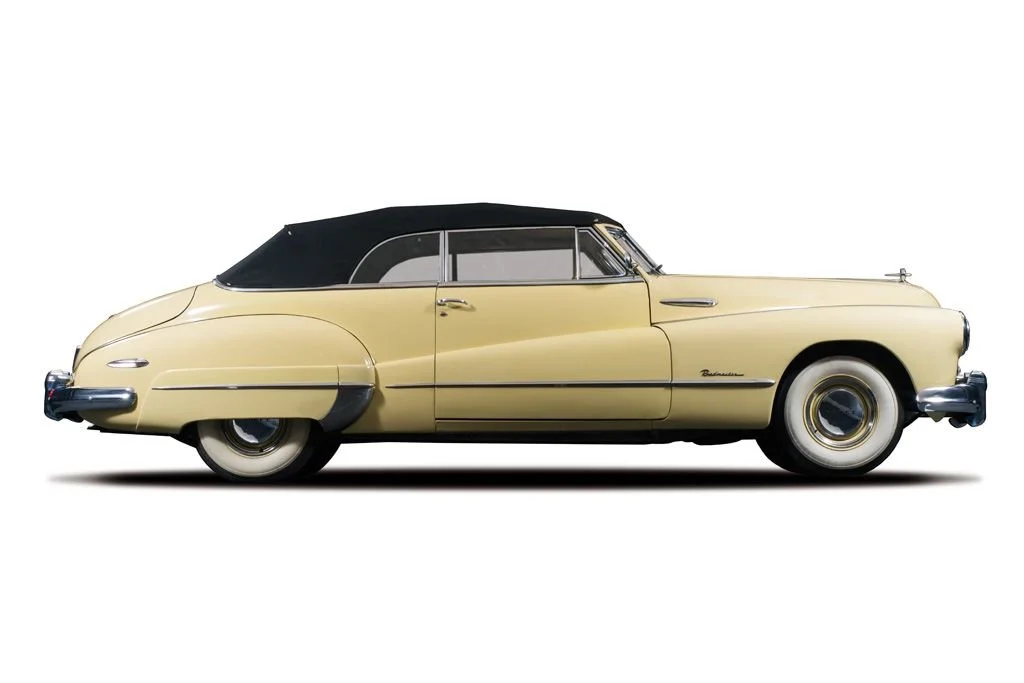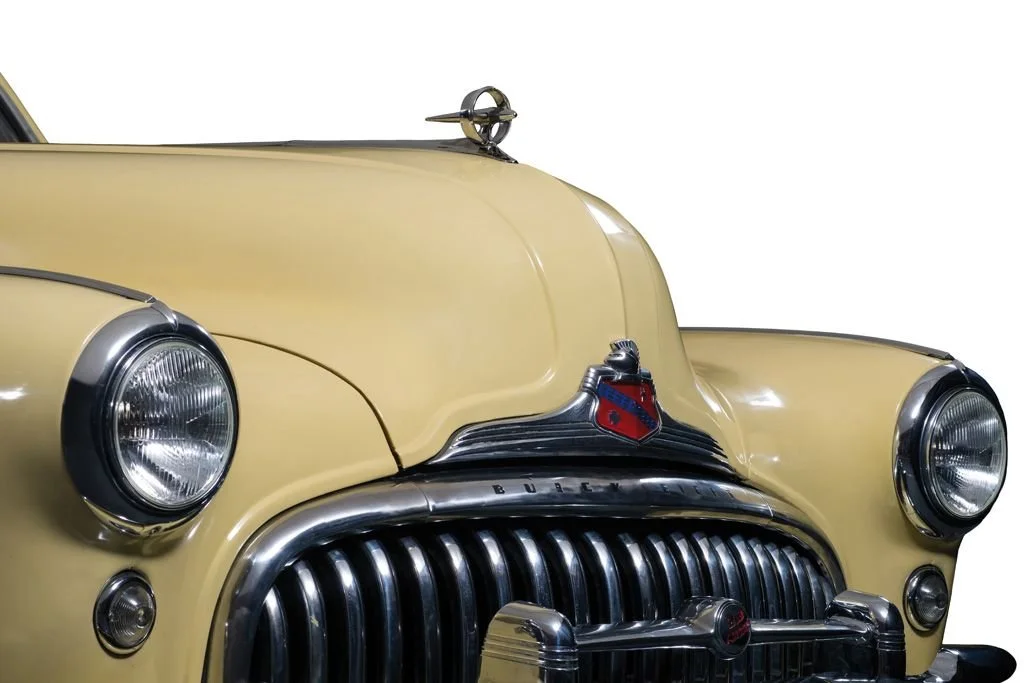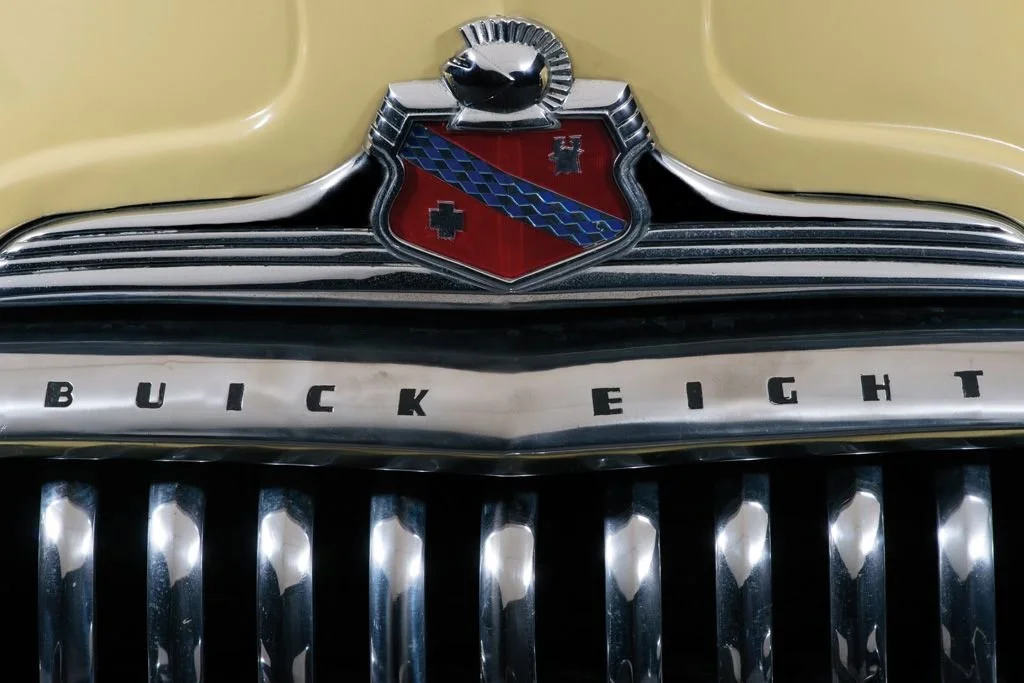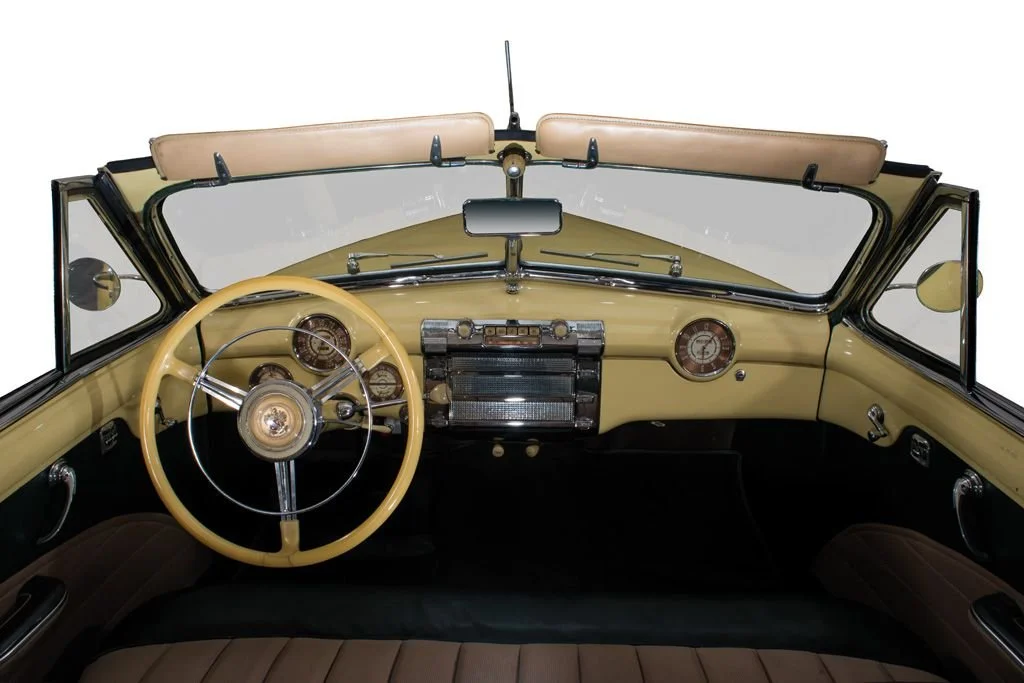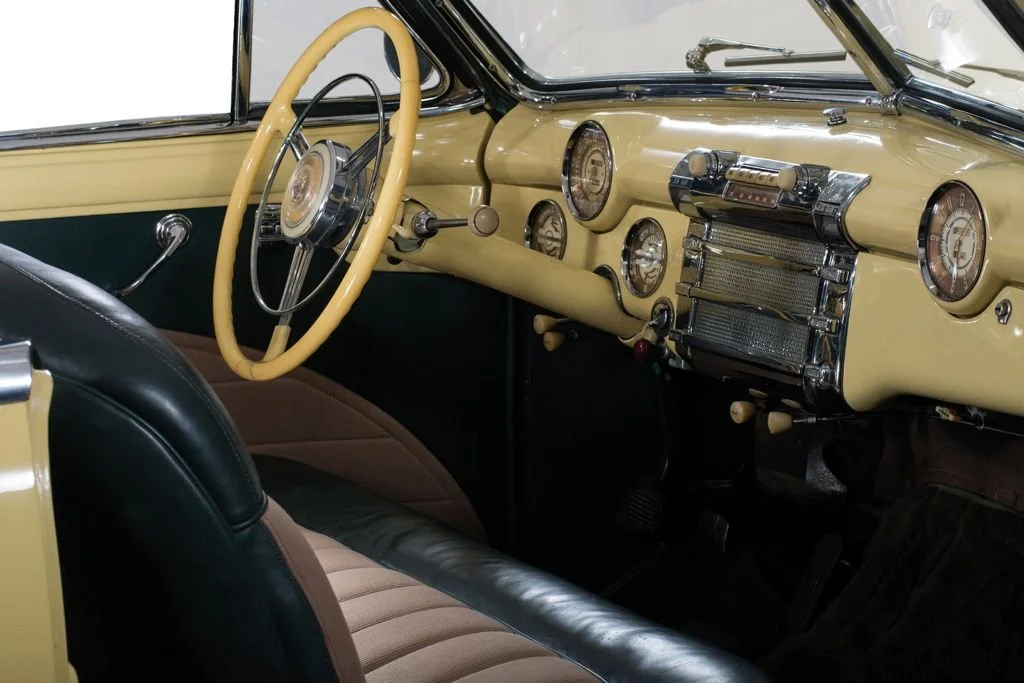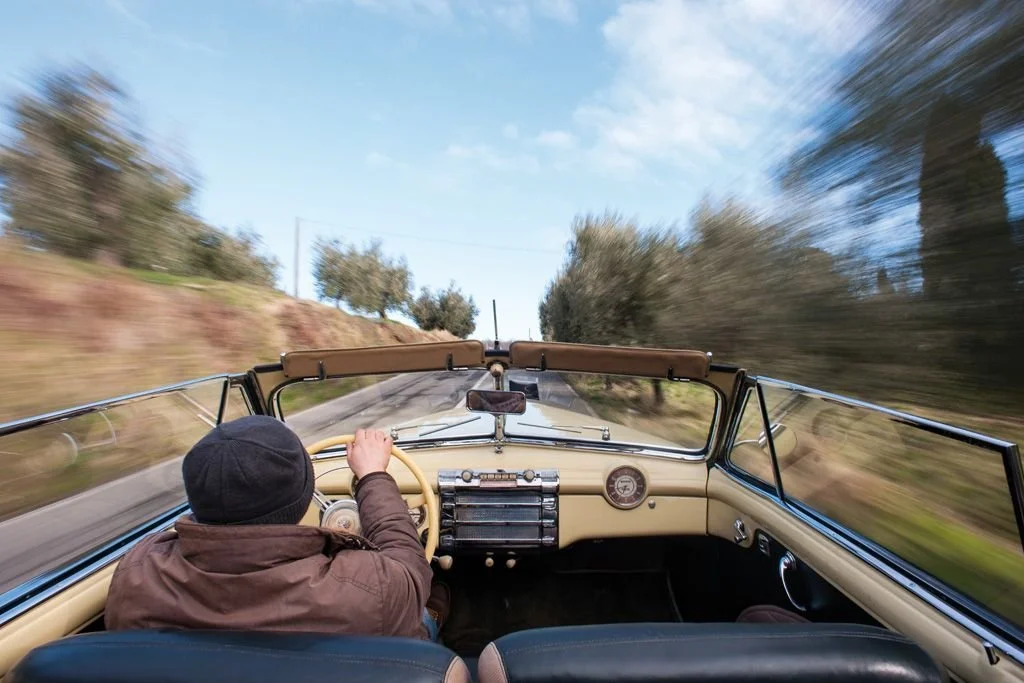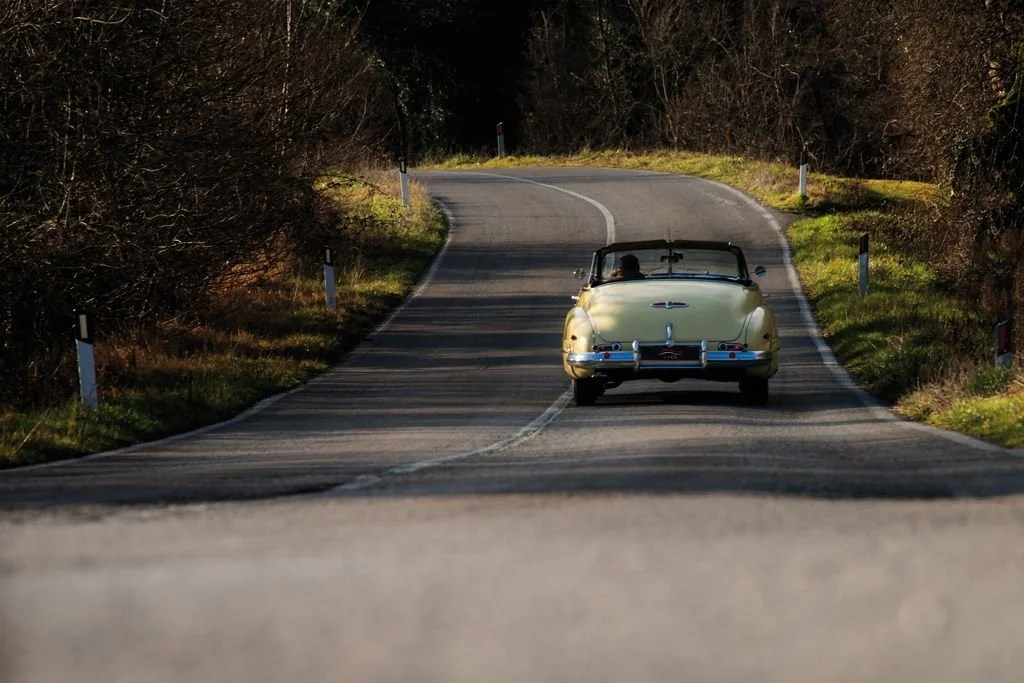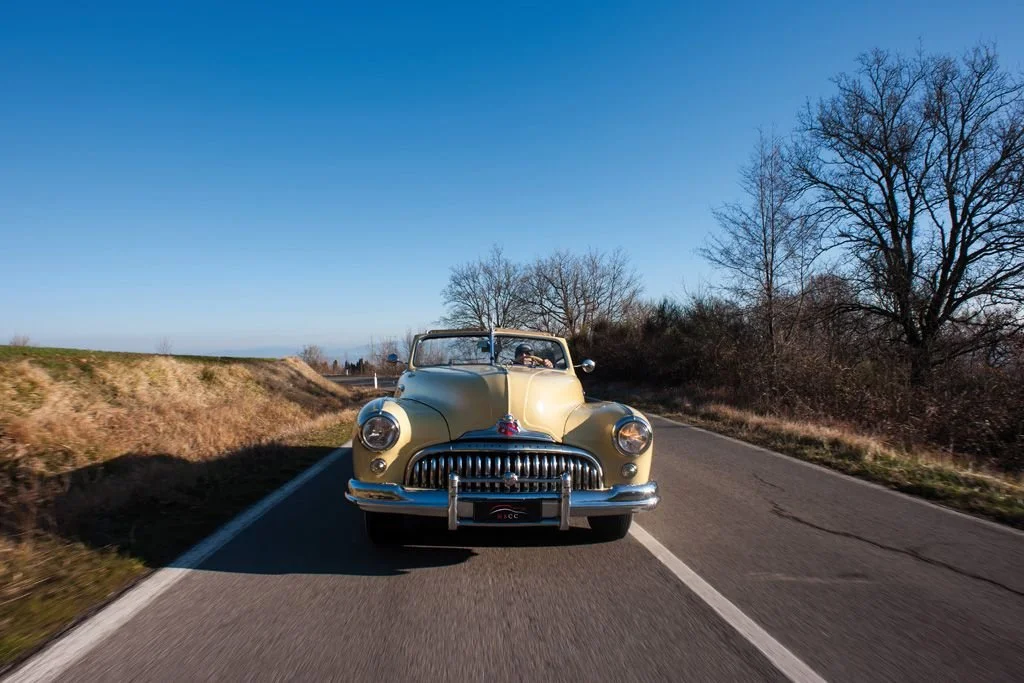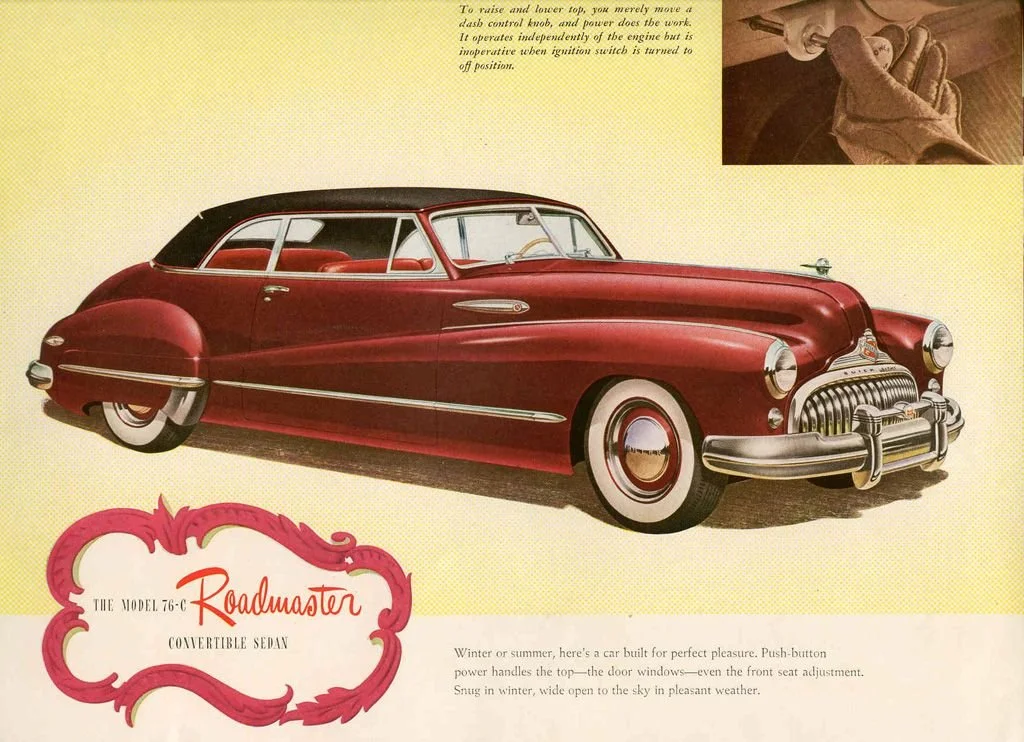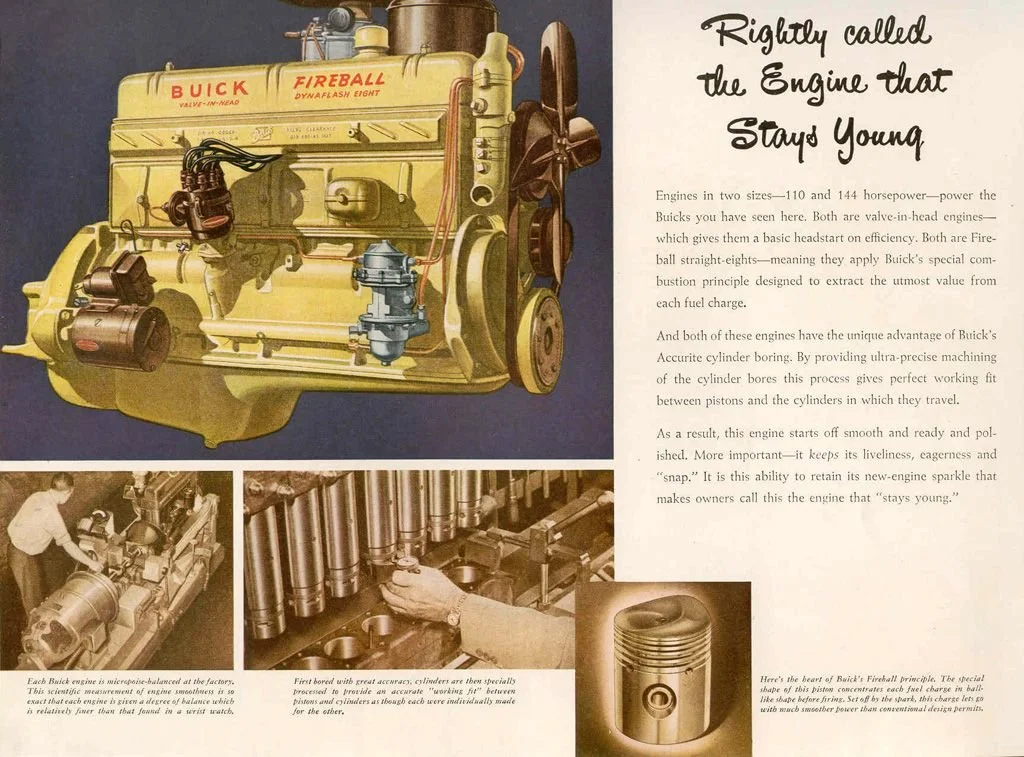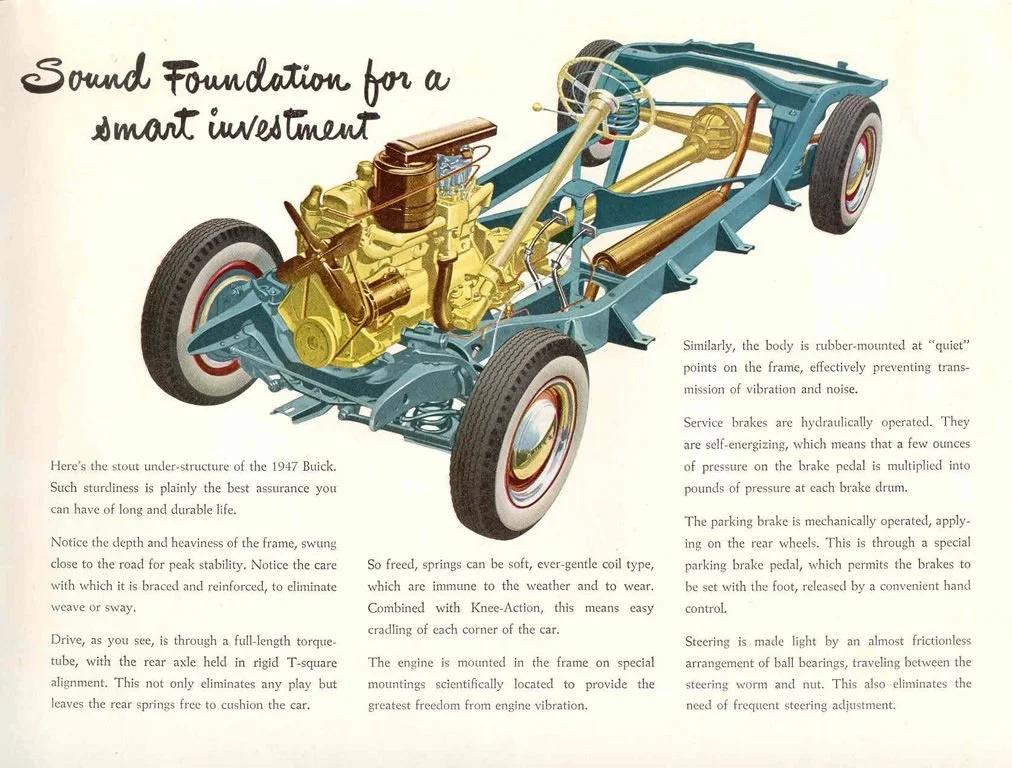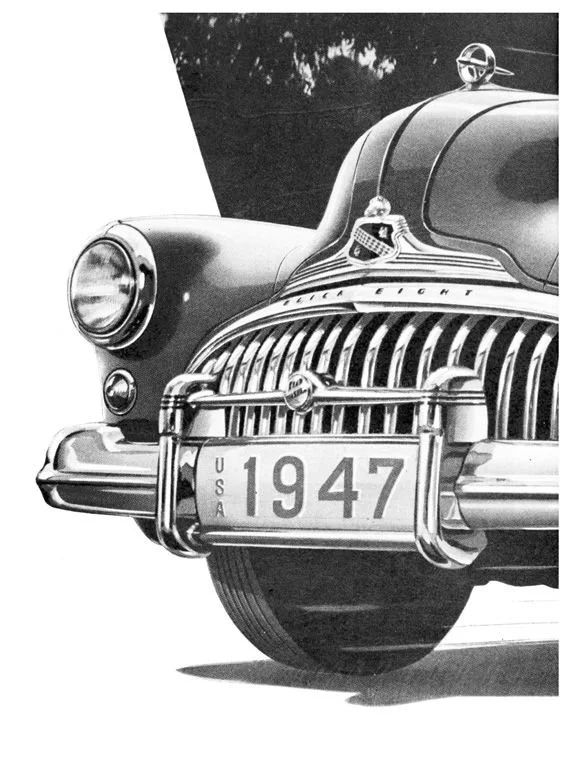-
The history of this Buick Roadmaster is more or less unknown until 1991, when it was exhibited at the “Oldtimer Festival” motorshow in Antwerp, Belgium. Here it attracted the attention of Alfred H. Heineken, grandson of the founder of the famous European brewery, who bought it for his collection. The Roadmaster Convertible had already been restored, the original color (Sherwood Green – paint code 5) had been changed to a yellow which in the 1947 Buick catalogue was called Sequoia Cream (paint code 14).
Following the death of Alfred Heineken in 2002, his automobile collection was put up for auction at Christie’s. The Buick Roadmaster was bought by the Bulgari Collection and proved to be in good general condition. As soon as it arrived in Rome, some minor renovations were carried out as it was starting to show some signs of aging since the last restoration. A light repaint, keeping the Sequoia Cream color, and some mechanical adjustments brought this model back to its former glory on the road.
The color of the interior is the same as when the car came out in the forties in Flint, Michigan: Green leather and Beige fabric trim. No further work was necessary: the 3-speed manual transmission, together with the reliable eight cylinder inline 320 cubic inch Fireball engine promise a long future ahead. -
Company
General MotorsWheelbase
129inInterior trim
Green leather/Beige clothBrakes
front and rear drumsMake
BuickLength
217inEngine
inline 8 - 320.2cidTires
7.00x16Model
Roadmaster Convertible - Series 70 - Model 76CWidth
80inCarburetor
1 carb. 2-barrelOriginal Price
$2,651Body style
2-door convertibleWeight
4345lbsHorsepower
144hp @ 3600rpmProduction
11,947Model year
1947Exterior paint
Sequoia Cream/Black topTransmission
3-speed manual -
The Roadmaster name first appeared on Buick automobiles in 1936 as a celebration of their engineering improvements and advancements in design. The Roadmasters (previously named Series 80, and later Series 70) were built on the longest wheelbase Buick had to offer. From 1946 through 1957 they were the most elegant and prestigious automobiles that Buick sold.
From 1936 through 1948 the Roadmaster appeared in coupe, sedan, convertible and station wagon bodystyles. A hardtop coupe was added in 1949 and dubbed the Riviera. When postwar automobile production resumed in the 1946 model year, chrome was more sparingly applied, swept-back fenders were fitted to sedans as well as coupes, and a war-inspired "bombsight" hood ornament was adopted. The instrument panel was two-toned with woodgrain facings except on convertibles, which used body-colored panels. Series identification was found on cloisonné emblems centered in the front and rear bumper guard. Compound Carburetion was eliminated and the compression ratio was reduced to 6.60:1. As a consequence the 1946 Roadmaster's horsepower fell from 165 to 144.
As buyers continued to bust down the doors at Buick dealers, it was a seller’s market, and the design that had originally been created in 1942, and had only been face-lifted since, continued to appear striking and modern and to draw in customers demanding new cars. It was certainly a sellers' market that fostered booming job creation and brought about newfound successes. Buick chose to keep their 1947 models largely the same as the original post-war cars of 1946. In 1947 a new stamped grille with a separate upper bar was used. The Roadmaster name appeared in red-filled script on a chrome button within the bumper guard crossbars, front and rear.
Based upon Buick’s longest wheelbase in its history (129 inch), the Roadmaster’s commanding presence also looked the part.
The robust and proven “Fireball Dynaflash” 320.2 cid (144 hp) inline eight-cylinder engine, coupled with a three-speed manual gearbox, powered the Roadmaster, which was available in coupe, sedan, convertible and station wagon models. The car was equipped with independent front suspension with coil springs, live rear axle with semi-elliptical leaf springs, and four-wheel hydraulic drum brakes.
Some additions to the range of accessories were a spotlight, a driver's side mirror, bumper guards, chrome stone guards, wide whitewall tires and painted steel wheels with chrome wheel covers and trim rings. Passenger amenities include a clock, heater, defroster and a Sonomatic radio. Like the 1946 models, '47 convertibles had hydraulic-assist tops.
For 1947, Buick found nearly 79,000 buyers for their Roadmaster vehicle.
The car was recognized as a clear expression of its owner’s good taste and upward mobility.

